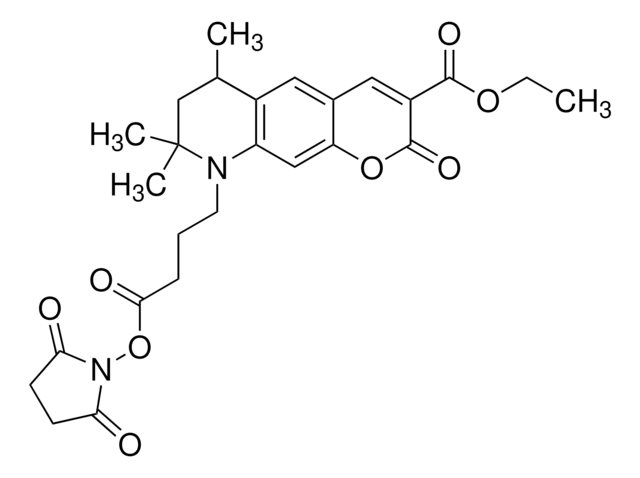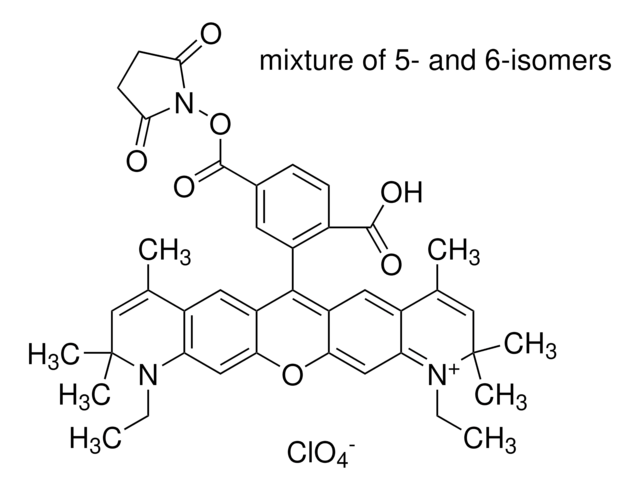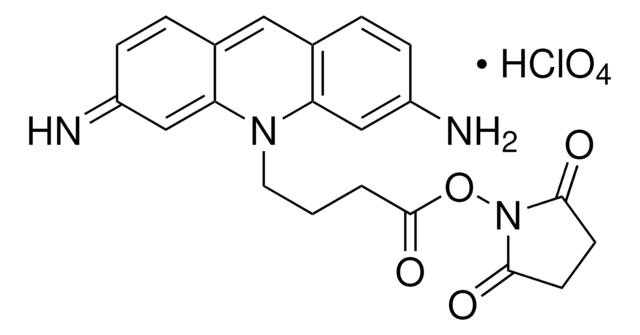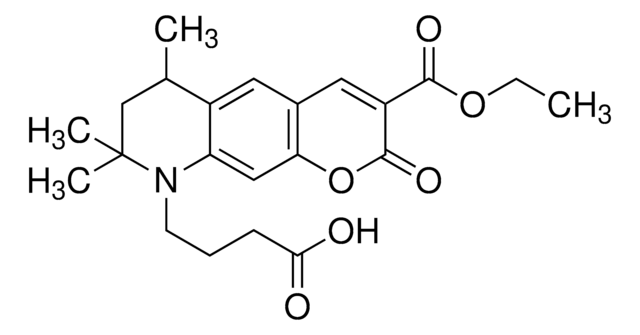Key Documents
00379
Atto 495 NHS ester
BioReagent, suitable for fluorescence, ≥90% (HPLC)
About This Item
Polecane produkty
linia produktu
BioReagent
Próba
≥90% (HPLC)
≥90% (degree of coupling)
producent / nazwa handlowa
ATTO-TEC GmbH
rozpuszczalność
DMF: soluble
DMSO: soluble
acetonitrile: soluble
λ
in acetonitrile (with 0.1% acetic acid)
absorpcja UV
λ: 496-502 nm Amax
przydatność
suitable for fluorescence
temp. przechowywania
−20°C
ciąg SMILES
[O-]Cl(=O)(=O)=O.CN(C)c1ccc2C=C3C=C\C(C=C3N(CCCC(=O)ON4C(=O)CCC4=O)c2c1)=[N+](\C)C
InChI
1S/C25H29N4O4.ClHO4/c1-26(2)19-9-7-17-14-18-8-10-20(27(3)4)16-22(18)28(21(17)15-19)13-5-6-25(32)33-29-23(30)11-12-24(29)31;2-1(3,4)5/h7-10,14-16H,5-6,11-13H2,1-4H3;(H,2,3,4,5)/q+1;/p-1
Klucz InChI
QYNYOHCMTHAQIE-UHFFFAOYSA-M
Zastosowanie
Inne uwagi
Informacje prawne
Kod klasy składowania
11 - Combustible Solids
Klasa zagrożenia wodnego (WGK)
WGK 3
Temperatura zapłonu (°F)
Not applicable
Temperatura zapłonu (°C)
Not applicable
Środki ochrony indywidualnej
Eyeshields, Gloves, type N95 (US)
Certyfikaty analizy (CoA)
Poszukaj Certyfikaty analizy (CoA), wpisując numer partii/serii produktów. Numery serii i partii można znaleźć na etykiecie produktu po słowach „seria” lub „partia”.
Masz już ten produkt?
Dokumenty związane z niedawno zakupionymi produktami zostały zamieszczone w Bibliotece dokumentów.
Klienci oglądali również te produkty
Produkty
Fluorescent Labeling of Peptides
Pochodne chromogeniczne i fluorogeniczne są nieocenionymi narzędziami w biochemii, mającymi liczne zastosowania w enzymologii, chemii białek, immunologii i histochemii.
Nasz zespół naukowców ma doświadczenie we wszystkich obszarach badań, w tym w naukach przyrodniczych, materiałoznawstwie, syntezie chemicznej, chromatografii, analityce i wielu innych dziedzinach.
Skontaktuj się z zespołem ds. pomocy technicznej





